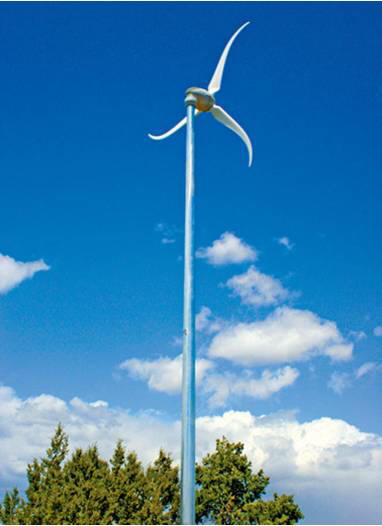Introduction:
The following analysis will assess Wind Turbine Suitability in the GVRD. Several factors including wind speed, land use type, and even slope will be included in a Multiple Criteria Evaluation. Vancouver is behind our west coast neighbours below the border and must realise the potential behind harnessing wind power for our electricity. As we all know, diversification is valuable, and although Hydro power is efficient, there are benefits to wind power that must be tapped into. ArcMap and IDRISI Andes will be utilized to discover the possibility of installing small wind turbines in the GVRD, even on the water. With technological breakthroughs happening regularly in the advancement of alternate energy sources, the efficiency and plausibility of completely renewable energy can only increase so we as Vancouvorites must embrace the wind blowing at our doorsteps.

Background:
The Canadian Wind Energy Association provided information regarding the background and use of wind energy. Below are some of their listed benefits of small wind energy:
Environment. Wind energy is non-polluting, and reduces the demand for higher-impact electricity from thermal stations (e.g. oil, natural gas, coal), hydroelectric dams and nuclear generators.
Energy Independence. Wind turbine systems can assist you in gaining more independence from your local utility. They can also make you less susceptible to power interruptions from the grid.
Cost. Wind energy systems are one of the most cost-effective home-based renewable energy systems. Depending on your wind resource, a small wind energy system can lower your electricity bill by up to 100%. They can also help you avoid rising and volatile electricity prices.
Remote Electricity Generation. If you are at a distance from existing grid lines, generating your own electricity helps you avoid the high costs of having utility power line extensions.
Complements Solar PV. Solar photovoltaic (PV) systems generate more electricity when there are more hours of sunshine and higher intensity sunshine (i.e. during the summer). Wind turbines generate more electricity when there are more hours of wind per day and higher intensity winds (i.e. during the winter). This makes wind an excellent complement to solar PV in a renewable electricity system.
With these factors in mind, it is a surprise that the GVRD is so behind in wind farming. What is holding them back? Are the wind speeds high enough? The Canadian Wind Energy Association states that over the next ten years it is expected that sales of small wind turbines
will increase significantly nationwide, with notable growth in on-grid residential and farm
applications.
Before beginning the technical aspect, some important considerations were disregarded. Consumers who embark on a small wind energy project without prior understanding of the permitting process may encounter a daunting array of siting considerations and confusing regulations. The politics behind these issues will not be undertaken. Also, sound considerations, visual impact, and public safety were not studied.
Small wind turbines, mounted on towers between 10 and 30 meters tall, can generate electricity from the wind for home use. A wind-powered generator, or turbine, situated at the top of a high tower, has blades, which spin to generate electricity. The electricity can either be used locally or sold to the utility company if excess is generated. There are 2 options for the power to get form the wind into a home. The power from the wind turbine may be connected to the main electric service wire to the home. Special interconnection equipment will allow powering the home, or sending the excess power generated by the turbine back to the utility grid. Otherwise, the turbine may be connected to batteries that store the energy created; know as an “off-grid” type.
Due to their height, wind turbines are best suited for remote or low-density residential lots of one acre or more. The GVRD does not contain many areas of this type but an investigation of the area using GIS may provide insight into the possibility of using small wind turbines right here in the GVRD.
Note: Cut-in speed: the wind speed at which the turbine begins to produce power
Rated wind speed: The wind speed at which the rated power is tested
The first wind small wind turbine investigated in the ARE 110 Wind Turbine. This specific turbine has a rotor diameter of 3.6 meters, and a rated power of 2.5kW. The cut-in wind speed is 2.5m/s and the rated wind speed is 11m/s. It has an average price of approximately $14,000 CAD. For a photo follow this link http://www.abundantre.com/Best_ARE110%20082b_cropped.jpg
The second small wind turbine is The Aerostar 6 Meter Wind Turbine. It has a larger diameter than the Air 110 at 6.7 meters. It has a cut-in speed of 3.5 m/s and a power rating of 10kW. The added power rating comes at a higher price ($24,000CAD) and has a higher cut-in speed. For a photo follow this link http://www.aerostarwind.com/